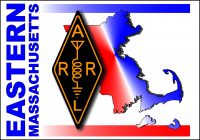The following update on the NTS 2.0 modernization project was recently sent to all ARRL Section Managers and Section Traffic Managers for dissemination to traffic handlers in their areas. More information can be found on the new website nts2.arrl.org under the Standards and Procedures tab. Information on handling instructions and numbered radiograms is available now and information on the encapsulation radiograms for emergency communications will be there soon. There is also a tab To Contribute Your Ideas if you wish to contribute those.
Greetings to all STMs and SMs,
It was brought to my attention that little to nothing has been disseminated regarding progress on the part of the NTS 2.0 teams. My apologies for not keeping folks better up to date.
You are aware that we held briefings throughout the various ARRL divisions during the latter part of 2022, and enlisted the help of 35 to 40 volunteers. Each was assigned to one or more of five implementation teams who have met weekly since the beginning of 2023. We have been able to secure a page on the ARRL website to inform you of the ongoing projects, but it is only recently that we are now able to share some results of these teams’ work.
1. An article on NTS has been published in the July issue of QST which you may have received already. We are grateful to the editors of QST for highlighting this program and look forward to more articles in the future.
2. Perhaps highest on the minds of most folks is an update to the Net Directory. This is a major undertaking as the current directory has not been updated in recent times and the software has not been felt by many to be very user friendly. While we don’t have a finished product to show you at this time, it is important for folks to know that one of our NTS 2.0 implementation teams has drawn up a set of requirements we think various groups will want to see implemented and this has been forwarded to the IT department at ARRL. Emergency manager Josh Johnston KE5MHV and the IT department have been pleased with our work and are now working with us to develop a product we hope you will find informative and easy to use. It will take a little time yet before you will see a finished product as the entire website at ARRL is in the process of being updated. We want you to know however that definite progress is being made, so we ask for your patience and hope you will be happy with the new net directory once it has been completed.
3. In accord with renewed interest in emergency communications preparedness on the part of amateur radio and the ARRL in particular, several of our teams have been working on encapsulation of the forms used by emergency service organizations. Forms such as the ICS-213, ARC-213, HICS-213 and the Texas STAR Form originated by emergency personnel must be deliverable exactly as sent, and to accomplish this these forms must be encapsulated within a radiogram for transmission via the National Traffic System. A great deal of thought and testing have gone into this product which will be revealed on the ARRL’s website (nts2.arrl.org). Documentation and training will be provided. While we recognize such emergency traffic will likely be sent via digital means where available, we feel it is important that voice and CW circuits must be capable and practiced in the event they are needed.
4. Because of the above mentioned use of emergency type traffic, there are some additional requirements which are important. You will find these on the above noted website as additional handling instructions and ARRL numbered radiograms.
Two new handling instructions are being added. One is HXI which indicates an encapsulated message is included which must be relayed so as to be deliverable in a particular format. The second is HXR, which requires the delivering station to notify the originator of the message confirming that the recipient has personally received the message. This is a frequent requirement from served agencies. This is different from the HXC instruction, which is sent by the delivering station instead to the station of origin, whose call sign is in the header. Where HXC notifies the station of origin of delivery (such as the message being deposited in a mailbox) of their Radiogram, HXR confirms to the sender that the recipient has the message in-hand.
A new ARRL numbered radiogram has been added as “ARL FORTY ONE”. This is to be used with an HXD handling instruction where tracing a message is important to find any possible breaks in the relay chain. You will find a number of blanks to be filled in a service reply. This standardization of the HXD reply will allow for more efficient tracking and better understanding of the process.
While we understand change can be hard, we hope you will find value in the above. The teams continue to work diligently to make improvements and we welcome feedback from the NTS community. Please share with net participants in your sections.
73, Marcia KW1U
NTS 2.0 Implementation Teams

